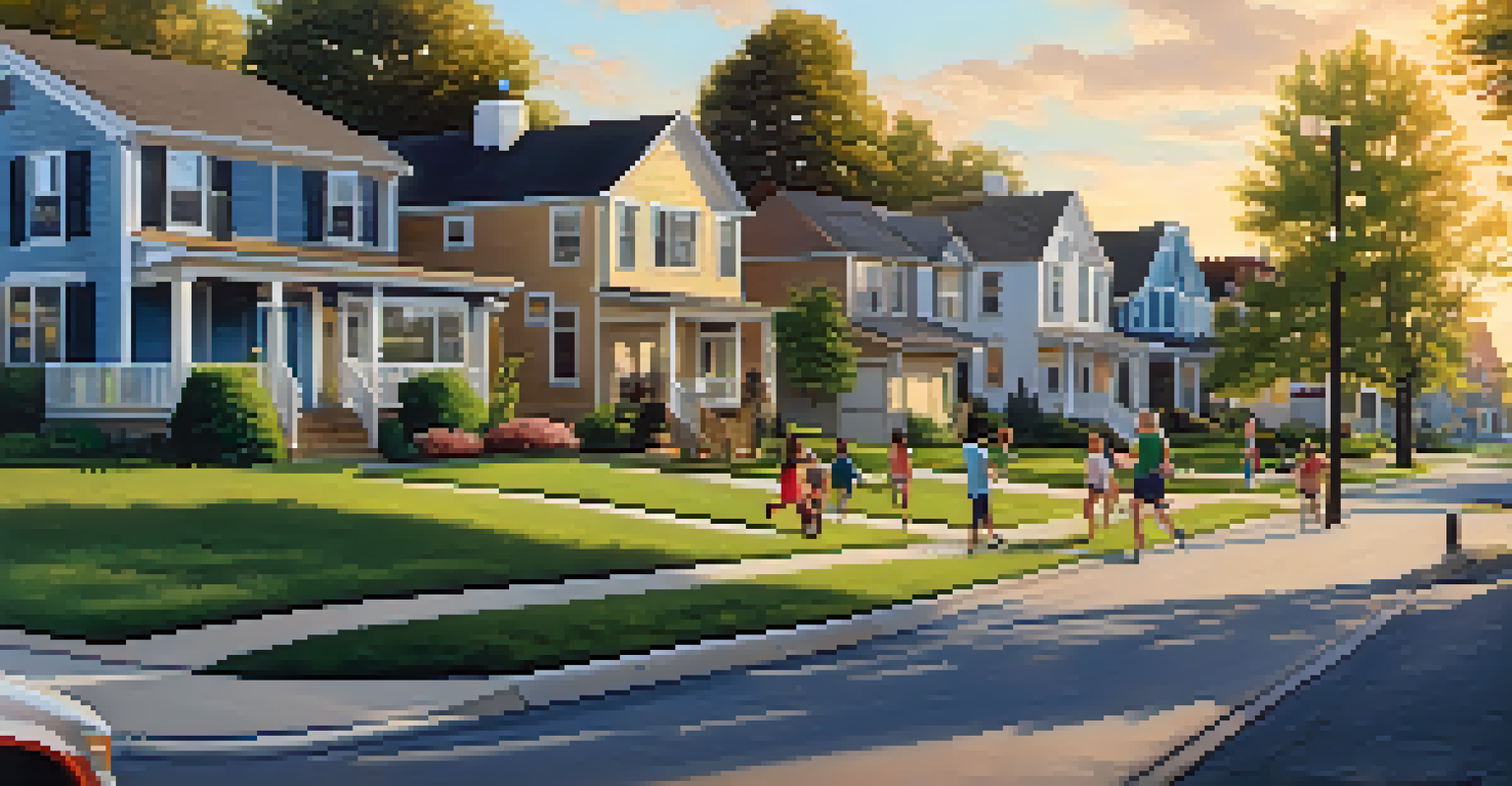The Rise of Remote Work: A Shift in Real Estate Demand

Understanding the Remote Work Phenomenon
Remote work has rapidly evolved from a niche option to a mainstream practice, especially accelerated by the pandemic. Many employees now enjoy the flexibility of working from anywhere, leading to significant lifestyle changes. This shift has sparked a broader conversation about how we view workspaces and their locations, fundamentally altering our relationship with real estate.
The future of work is not about where you work, but how you work.
As companies embrace flexible work policies, employees are no longer tethered to urban offices. They can choose to relocate to areas with a lower cost of living or simply pursue a lifestyle that suits them better. This newfound freedom is reshaping where people want to live, driving demand for different types of properties.
The rise of remote work isn’t just a passing trend; it’s a long-term shift that will likely continue to influence real estate for years to come. Understanding this phenomenon helps us grasp the broader implications for housing markets, office spaces, and community dynamics.
Shifting Preferences in Residential Real Estate
With remote work gaining traction, many homebuyers are prioritizing space and functionality over proximity to offices. Larger homes with dedicated workspaces are now in high demand, as people seek environments conducive to productivity. This trend is pushing buyers to consider suburbs or rural areas that offer more square footage at lower prices.

Families are particularly drawn to homes that can accommodate both work and leisure. Features like home offices, larger kitchens, and outdoor spaces are becoming essential criteria in property searches. The desire for a well-rounded living environment has led to a surge in interest in properties that can cater to these needs.
Remote Work Reshapes Real Estate
The shift to remote work is transforming residential and commercial real estate preferences, influencing where people choose to live and work.
As a result, real estate agents are observing a shift in buyer demographics and preferences. Areas that were once overlooked are now becoming hotspots, signaling a transformation in how and where people want to live and work.
Commercial Real Estate Faces New Challenges
While residential real estate is thriving, commercial properties are experiencing a downturn. Many companies are downsizing their office spaces or opting for hybrid models, leading to an increase in vacant office buildings. This shift raises questions about the future of urban commercial real estate and its viability.
Remote work is about finding the balance between work and life, and that balance is often found in the space around us.
Landlords are now rethinking their strategies, often converting traditional office spaces into mixed-use developments or co-working spaces. This adaptation not only addresses the current demand but also attracts businesses looking for flexible arrangements. The landscape of commercial real estate is evolving rapidly as a response to these changes.
Moreover, the rise of remote work encourages innovative approaches to office design. Companies are focusing on creating collaborative environments rather than simply providing desk space, which may influence future construction and renovation projects in the commercial sector.
The Impact on Urban vs. Suburban Living
The shift to remote work is leading to a notable migration from urban to suburban areas. With fewer employees required to be in the office, many are choosing to make this move permanent, seeking more space and a quieter lifestyle. This trend not only affects housing demand but also has broader implications for urban planning.
Suburban areas are beginning to see increased investment and development as new residents arrive. This influx can lead to revitalization of these communities, with new amenities and services catering to a growing population. However, it also raises concerns about infrastructure and the sustainability of rapid growth.
Suburbs and Rural Areas Thrive
As employees embrace remote work, there's a growing demand for homes in suburban and rural areas, leading to increased property values and community revitalization.
Conversely, urban centers are adapting to maintain their appeal. Cities are reinventing themselves to attract residents who still value urban living, focusing on enhancing quality of life through parks, cultural offerings, and improved public transport. This dynamic creates a fascinating juxtaposition in real estate demand across different regions.
Rural Areas Gain Popularity as Work Locations
As remote work becomes commonplace, rural areas are emerging as attractive living options. Individuals and families are discovering the charm of small-town life, combined with the benefits of working remotely. The tranquility and natural surroundings of rural locations are becoming increasingly appealing to those looking to escape city life.
This trend has led to a surprising increase in real estate prices in previously undervalued rural markets. Properties that once languished on the market are now being snatched up, as buyers seek out homes with land and scenic views. It's a refreshing change that provides new opportunities for both buyers and sellers.
Moreover, this movement is fostering a sense of community in rural areas, as new residents bring diversity and fresh perspectives. Local economies are also benefiting from an influx of new residents who contribute to the community and stimulate growth.
Technological Innovations and Real Estate
The rise of remote work has spurred a wave of technological innovations in the real estate sector. Real estate agents and developers are leveraging virtual tours and online platforms to showcase properties, making it easier for potential buyers to explore homes from anywhere. This accessibility is transforming the home-buying process.
Additionally, technology is facilitating better communication and collaboration between buyers, sellers, and agents. Tools like digital contracts and e-signatures streamline transactions, making the process more efficient. As more people engage in remote work, the need for seamless technology in real estate will only grow.
Tech Innovations Enhance Real Estate
Technological advancements, such as virtual tours and digital transactions, are revolutionizing the real estate market, making home buying more accessible and efficient.
These advancements not only simplify the buying process but also enhance the overall customer experience. As the industry adapts to these changes, technology will continue to play a pivotal role in shaping the future of real estate.
Future Trends in Real Estate Demand
Looking ahead, the real estate landscape will continue to evolve in response to the ongoing shift toward remote work. Trends like increased demand for flexible living spaces and a focus on sustainability are likely to gain momentum. Buyers will increasingly seek homes that not only accommodate their work needs but also align with their values.
Furthermore, as remote work remains a viable option for many, we may see a continued decline in traditional office space demand. This could lead to new opportunities for repurposing existing commercial properties, creating innovative spaces that serve dual purposes. The adaptability of the real estate market will be crucial in navigating these changes.

Ultimately, understanding these emerging trends will empower buyers, sellers, and investors to make informed decisions. The rise of remote work is not just a fleeting moment; it represents a profound transformation in how we view living and working in today’s world.